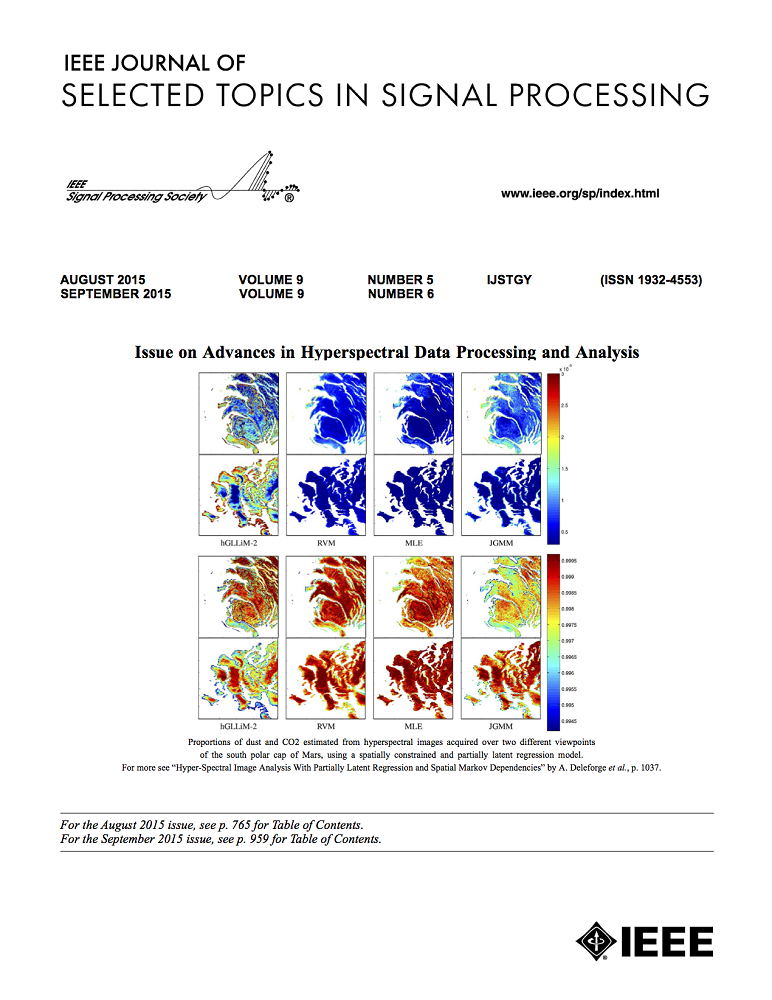Analytical Characterization of RIS-Aided Terahertz Links in the Presence of Beam Misalignment
IF 8.7
1区 工程技术
Q1 ENGINEERING, ELECTRICAL & ELECTRONIC
IEEE Journal of Selected Topics in Signal Processing
Pub Date : 2023-06-15
DOI:10.1109/JSTSP.2023.3286700
引用次数: 0
Abstract
The terahertz (THz) frequency band has recently attracted considerable attention in wireless communications as potential candidate for providing the necessary high bandwidth for demanding applications. With increasing frequency, however, the communication link becomes more vulnerable to blockage, and pathloss increases. While both effects can be mitigated with the judicious utilization of directional beams and Reconfigurable Intelligent Surfaces (RISs), high directivity could potentially increase the probability of undesired misalignment between the beam that is steered by the RIS, and the user. It is therefore crucial to characterize and understand the stochastic behavior of misalignment in RIS-aided THz links. In this work, beam misalignment in RIS-aided links is studied theoretically and analytical models are derived, the validity of which is verified through numerical calculations. It is demonstrated that there is a distinction in the stochastic behavior of misalignment between pointing errors that occur on the steering plane or normally to the steering plane, with direct consequences on the link robustness on misalignment. The analytical models capture the impact of misalignment under these qualitatively different conditions and provide the necessary tools for assessing the stochastic RIS performance with respect to crucial link parameters, such as the transmitter's beam width, the transmitter-RIS distance, the RIS-receiver distance, and the steering angle of the RIS.存在光束失准情况下RIS辅助太赫兹链路的分析表征
太赫兹(THz)频带作为为要求苛刻的应用提供必要的高带宽的潜在候选者,最近在无线通信中引起了相当大的关注。然而,随着频率的增加,通信链路变得更容易被阻塞,路径损耗也会增加。虽然这两种影响都可以通过明智地使用定向波束和可重构智能表面(RIS)来减轻,但高方向性可能会增加RIS引导的波束与用户之间不期望的未对准的概率。因此,表征和理解RIS辅助THz链路中未对准的随机行为至关重要。本文从理论上研究了RIS辅助连杆中的梁失准问题,推导了解析模型,并通过数值计算验证了其有效性。研究表明,在转向平面上或正常转向平面上发生的指向误差之间,未对准的随机行为存在差异,直接影响未对准时的连杆鲁棒性。分析模型捕捉了在这些定性不同条件下未对准的影响,并提供了必要的工具来评估与关键链路参数有关的随机RIS性能,如发射器的波束宽度、发射器RIS距离、RIS接收器距离和RIS的转向角。
本文章由计算机程序翻译,如有差异,请以英文原文为准。
求助全文
约1分钟内获得全文
求助全文
来源期刊

IEEE Journal of Selected Topics in Signal Processing
工程技术-工程:电子与电气
CiteScore
19.00
自引率
1.30%
发文量
135
审稿时长
3 months
期刊介绍:
The IEEE Journal of Selected Topics in Signal Processing (JSTSP) focuses on the Field of Interest of the IEEE Signal Processing Society, which encompasses the theory and application of various signal processing techniques. These techniques include filtering, coding, transmitting, estimating, detecting, analyzing, recognizing, synthesizing, recording, and reproducing signals using digital or analog devices. The term "signal" covers a wide range of data types, including audio, video, speech, image, communication, geophysical, sonar, radar, medical, musical, and others.
The journal format allows for in-depth exploration of signal processing topics, enabling the Society to cover both established and emerging areas. This includes interdisciplinary fields such as biomedical engineering and language processing, as well as areas not traditionally associated with engineering.
 求助内容:
求助内容: 应助结果提醒方式:
应助结果提醒方式:


